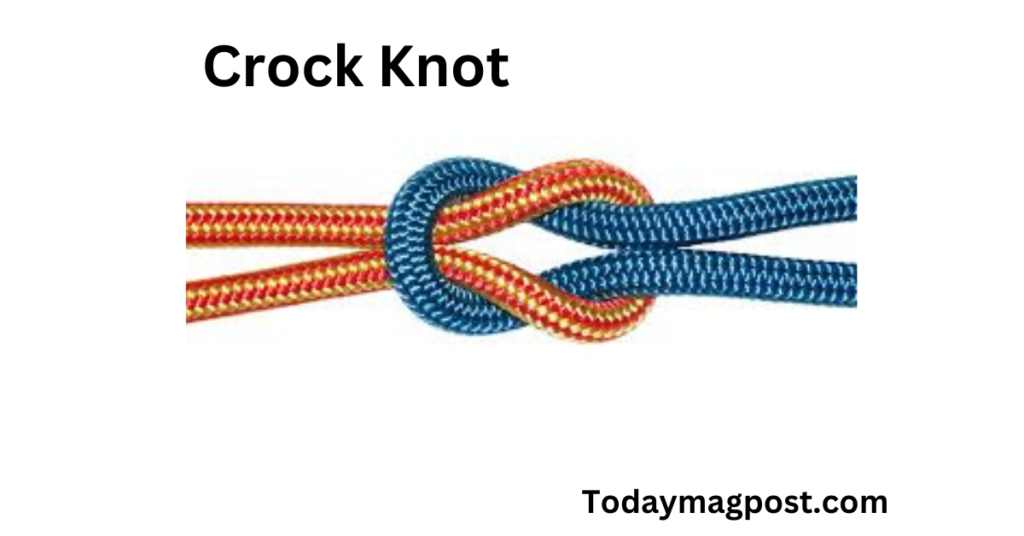Introduction
A. Definition of the Crock Knot
The crock knot, a versatile and reliable knot, is widely used in various activities, particularly fishing and camping. This knot is known for its ability to secure lines tightly while maintaining ease of untangling when needed. Its unique structure ensures that it holds firm under tension, making it an essential tool for outdoor enthusiasts.
ALSO READ: Understanding AE27FF level 21
B. Importance of Knots in Various Activities
Knot tying is an indispensable skill in many outdoor activities. Whether you’re fishing, sailing, or embarking on a camping trip, knowing how to tie the right knot can make all the difference. Among the myriad of knots available, the crock knot stands out for its reliability and simplicity.
History of the Crock Knot
A. Origins and Development
The history of knot tying dates back thousands of years, with evidence suggesting its use in various cultures for fishing, sailing, and more. The crock knot is believed to have originated from these traditional practices, evolving to meet the needs of modern-day adventurers.
B. Traditional Uses in Different Cultures
Various cultures have employed different knots for specific tasks. The crock , in particular, has been favored for its strength and versatility, finding its way into fishing nets and securing gear in outdoor settings across the globe.
How to Tie a Crock Knot
A. Step-by-Step Instructions
Tying a crock knot is straightforward and can be mastered with a little practice. Here’s how to do it:
- Start with two lines: Take the two lines you want to connect.
- Make a loop: Create a loop with one of the lines over the other.
- Wrap around: Wrap the end of the first line around the second line and through the loop you just created.
- Pull tight: Hold both lines and pull them in opposite directions to tighten the knot.
- Trim excess: If necessary, trim any excess line for a neat finish.
B. Tips for Effective Knot Tying
To ensure a secure crock , avoid common mistakes such as leaving too much slack or not pulling the lines tight enough. Practicing on different materials can also help in mastering the technique.
Applications of the Crock Knot
A. Fishing
In fishing, the crock knot is often used to secure hooks or lures to lines. Its strength ensures that the connection remains intact even when reeling in a big catch.
B. Camping and Outdoor Activities
For campers and hikers, the crock knot can secure tents, gear, and other essentials. Its reliability in various weather conditions makes it a go-to choice for outdoor adventures.
C. Other Recreational Uses
Aside from fishing and camping, the crock is useful in various recreational activities, including climbing and boating, where securing lines is crucial.
Benefits of Using the Crock Knot
A. Strength and Security
One of the primary advantages of the crock knot is its strength. This knot can hold under significant pressure, making it suitable for challenging conditions where safety is paramount.
B. Versatility
The crock knot is incredibly versatile, adaptable for various scenarios. Its ability to connect different types of lines and materials makes it a preferred choice among outdoor enthusiasts.
VI. Troubleshooting Common Issues
A. When the Knot Slips
If you find that your crock knot is slipping, ensure that you’ve pulled it tight enough during the tying process. Adding an additional wrap around the lines can also help secure it further.
B. Difficulty in Tying the Knot
For those struggling to master the crock , practice is key. Start with thicker lines or ropes to get a feel for the knot, and consider watching tutorial videos for visual guidance.
Conclusion
A. Recap of Key Points
The crock is a reliable, strong, and versatile knot essential for fishing, camping, and various outdoor activities. Its ease of tying and untying makes it a favorite among adventurers.
B. Encouragement to Practice
Whether you’re a seasoned outdoors person or a beginner, practicing the crock knot will enhance your skills and confidence. Don’t hesitate to experiment with different lines and applications to fully understand the knot’s potential.
Additional Resources
A. Recommended Tools and Materials
When practicing knot tying, using high-quality ropes or lines is crucial. Look for materials that mimic the thickness and texture of those you’ll encounter in the field.
B. Links to Tutorials and Videos
For those who are visual learners, numerous online resources can help you master the crock . YouTube is a treasure trove of tutorials, providing step-by-step guidance to refine your technique.

1 Comment
Pingback: Jerryflow V2 : A Comprehensive Guide to the Latest Innovation in Flow Control Systems